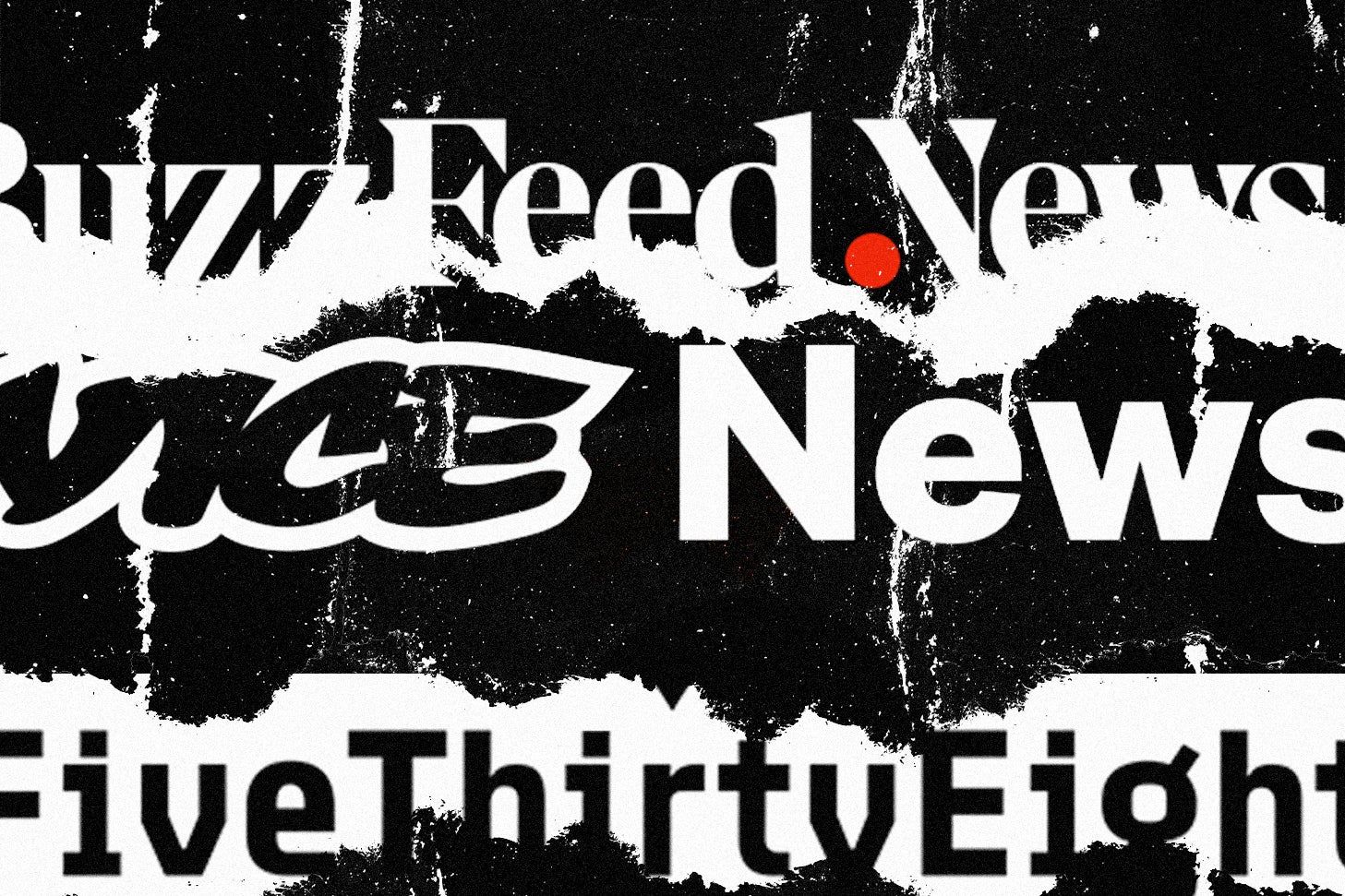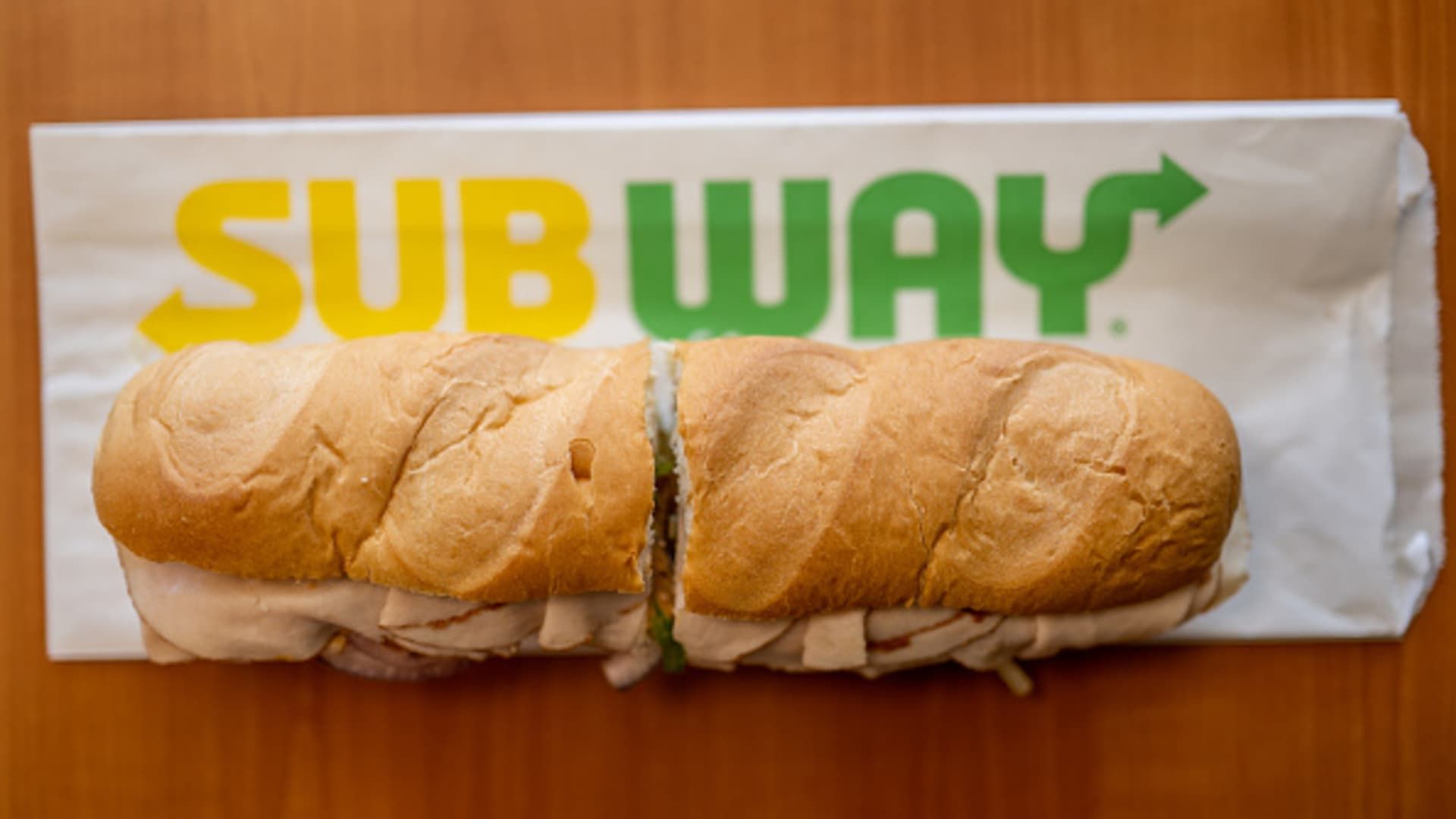The current crisis was born of digital media's original sin.
When it comes to that high-octane, stressful, ever-crumbling field known broadly as digital media, pretty much every week can qualify as a bleak one. The news itself is constantly, famously bad; its pace is relentless and overwhelming. Readers are exhausted; web traffic—that all-important metric for bringing in ad dollars—is erratic. Job prospects are scarce, and solid freelance gigs (never mind sustainable ones) are hard to find.
Even so, last month may go down as one of the most crushing and ominous periods for digital journalism in living memory. Many seemed to agree that the events in April marked the “end of an era”—though far fewer can agree on what the next era might look like. Onetime standard-bearers of industrywide innovation have met tragic fates, and the future of the survivors in the field has hardly ever seemed more uncertain.
Advertisement
Advertisement
Advertisement
Advertisement
To recap last week alone: On Tuesday, Disney’s multibillion-dollar cost-cutting effort trickled down to its big-name news brands, with ESPN, FiveThirtyEight, ABC News, and National Geographic Magazine all taking massive hits to their headcounts. On Wednesday, Paper Magazine announced it would shed its editorial staff but aim to keep its brand alive, while Facebook, the megacorporation we can all thank for kickstarting the ruinous “pivot to video” craze, pivoted away from video by shutting down its Facebook Watch originals, including Jada Pinkett Smith’s much-acclaimed Red Table Talk. The next day, Vice Media underwent yet another brutal round of layoffs, taking the ax to famed journalistic properties like Vice News Tonight, Vice World News, Vice Audio, and Waypoint. The entire company, struggling to find a new financial lifeline, could file for bankruptcy as soon as this week.
Advertisement
All this budget slashing followed a week during which BuzzFeed News closed for good, and Insider and the Miami Herald took on extra staff cuts. All that was in addition to the awful layoffs that hit so many other beloved journalistic institutions throughout 2023, at NPR, the Washington Post, Sports Illustrated, Bookforum, and NBC News, among others. Upstart, legacy, online-only, print, audio, video, niche, general-interest, award-winning, bottom-barrel, for-profit, nonprofit, public, private—almost no type of publication was spared some kind of cost-cutting during this mediapocalypse. (Juggernauts like the New York Times survive and thrive by offering services outside of journalism, including crosswords, cooking apps, and Wordle.)
Advertisement
As bizarre and unnerving as it is to say it, this kind of widespread meltdown is a common occurrence. The industry lost 5,000 jobs from 2014 through 2017, and more than 15,000 cuts were announced in 2018 alone. When the COVID recession hit, the thousands more jobs lost from 2020 onward almost seemed a foregone conclusion. Inevitably, there’s no way the current media-layoff spree has concluded. It’s always a matter of timing; check back next week for fresh new horrors.
Advertisement
Advertisement
For years, the tech industry has propped up digital journalism with advertising revenue, venture capital injections, and far-reaching social platforms. (Slate itself is the onetime baby of Microsoft.) That support has decreased and, in some cases, dropped off a cliff, especially as the biggest tech companies laid off tens of thousands of their own workers, many of whom have nothing to do with distribution of digital journalism. The Big Tech bubble has burst, and digital media got splattered with shrapnel.
Journalists have long mourned the publications we’ve lost, wept for the careers that once were, and proposed solutions both forward-thinking and ill-advised. Still, this time feels different. Not least because at this point, there might be as many pieces out there about the digital-media crisis as there are jobs lost within its gaping maw.
Advertisement
Advertisement
Advertisement
I’m proud of where I work, grateful that it’s survived such headwinds, and lucky to have a job I love. I do hate that the opportunities I’ve had are denied to so many talented others who are smarter, more experienced, and less privileged than I am. It additionally sucks to realize you can only help others so much, especially in a hypercompetitive environment: More job-seekers are applying for fewer open positions, and more freelancers are competing for fewer editors with smaller budgets.
If there’s something about last month that felt especially dark, it’s likely the confirmation that many of the so-called innovations and disruptions that took root during journalism’s Information Age transition (aka Tech Takeover) ultimately failed. You could pack all the familiar terms into a George Carlin–style breathless monologue: clickbait, Facebook, death-of-the-homepage diversification, sponcon, Trump bumps, pivoting to video, pivoting to VR, pivoting to A.I., scaling up, scaling down, going viral, going solo. Maybe the end of the road was foreseeable: If the original sin of the digital economy was to make the news free, the proposed fix—to trust that virality alone could drive readers to important subjects—was far from a cure.
This downturn won’t spell the end for digital media. Nor will it be the last time that tech-fueled, deus-ex-machina-like fixes are attempted industrywide. But perhaps the lessons from our current mediapocalypse will better prepare us for the industry’s future. We can’t rely on the tech world to “save” journalism. Trusting in any one “revolution” will ensure we make the same mistakes again.
Source: Slate


